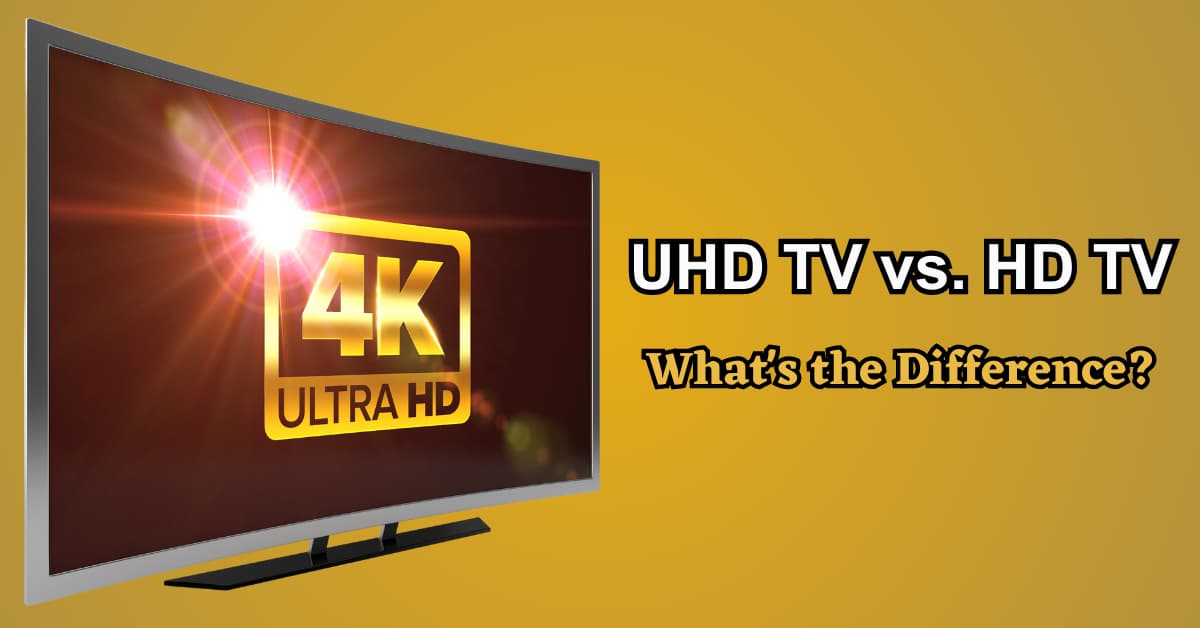
What is UHD TV?
“UHD TV” refers for “Ultra High-Definition Television.” In comparison to typical high-definition (HD) televisions, it is a word used to denote televisions with a better resolution. The resolution of UHD TVs is typically 3840 x 2160 pixels, which is four times that of 1080p HD TVs.
UHD TVs’ higher resolution produces images with finer details and better clarity, as well as greater detail and sharpness. When watching 4K movies, TV shows, and video games, which are made or optimized for UHD resolution, this improved picture quality provides a more immersive viewing experience.
Other cutting-edge technologies, such high dynamic range (HDR) technology, which improves the contrast and colour accuracy of the displayed material, are frequently included with UHD TVs.
UHD TV Features
HD TVs come with various features that enhance the viewing experience and provide additional functionalities. Here are some common features found in UHD TVs:
- High Resolution: UHD TVs offer a resolution of 3840 x 2160 pixels, providing four times the number of pixels compared to HD TVs.
- High Dynamic Range (HDR): Many UHD TVs support HDR technology, which expands the range of contrast and color accuracy.
- Smart TV Capabilities: Many UHD TVs are equipped with smart features, allowing them to connect to the internet and access various online streaming services, apps, and web browsing.
- HDMI and Connectivity Options: UHD TVs typically have multiple HDMI ports to connect various devices such as Blu-ray players, gaming consoles, and sound systems.
- Voice Control and Virtual Assistants: Some UHD TVs offer voice control capabilities, allowing you to control the TV, search for content, adjust settings, and more using voice commands.
Benefits of UHD TV
Here are some benefits of UHD TV:
- Higher Resolution
- Enhanced Picture Quality
- Immersive Viewing Experience
- Larger Screen Sizes
- High Dynamic Range (HDR)
- Future-Proof Investment
- Upscaling Capabilities
- Gaming Performance
Future Trends in UHD TV Technology
The field of UHD TV technology is constantly evolving, and several future trends are expected to shape the industry. Here are some potential future trends in UHD TV technology:
- 8K Resolution
- Improved HDR Standards
- Micro LED Technology
- Enhanced Color Technologies
- Improved Viewing Angles
- Integration of AI and Machine Learning
- Seamless Integration with Smart Home Devices
UHD TV vs. HD TV: What’s the Difference?
There are many differences between UHD TV and HD TV:
- Resolution: The most significant difference between UHD TV and HD TV is the resolution. HD TVs typically have a resolution of 1920 x 1080 pixels, also known as 1080p or Full HD. On the other hand, UHD TVs have a much higher resolution of 3840 x 2160 pixels, commonly referred to as 4K UHD. UHD TVs offer four times the number of pixels compared to HD TVs, resulting in sharper and more detailed images.
- Pixel Density: Due to their higher resolution, UHD TVs have a higher pixel density. The increased pixel density means that UHD TVs can display finer details with more clarity, providing a more immersive viewing experience. The pixels are less noticeable, making the image appear smoother and more lifelike.
- Image Quality: The higher resolution of UHD TVs results in enhanced image quality compared to HD TVs. UHD TVs can display more colors, offer better color accuracy, and provide a wider color gamut, allowing for more vibrant and realistic visuals. UHD TVs often support High Dynamic Range (HDR), which further improves contrast, brightness, and color accuracy.
- Screen Sizes: UHD TVs often come in larger screen sizes compared to HD TVs. The higher resolution allows for larger screens without sacrificing image quality. UHD TVs are commonly available in sizes ranging from 40 inches and above, making them suitable for creating a more immersive home theater experience.
5 Must-Know Facts About UHD and HD
- The time period “excessive definition” or “HD” originated within the past due 1930s.
- 4K and UHD constitute awesome resolutions, with 4K being just one of numerous under UHD.
- UHD can provide as much as 21 times the excellent of HD in extreme instances (like 16K vs 720p), but frequently it’s approximately two times the best (e.g. 4K vs 2K).
- Pioneering improvements in HD and UHD have been made via a leading broadcaster.
- Experts assume the want for a new digital video format due to UHD’s open-ended definition, lacking destiny-proofing.



